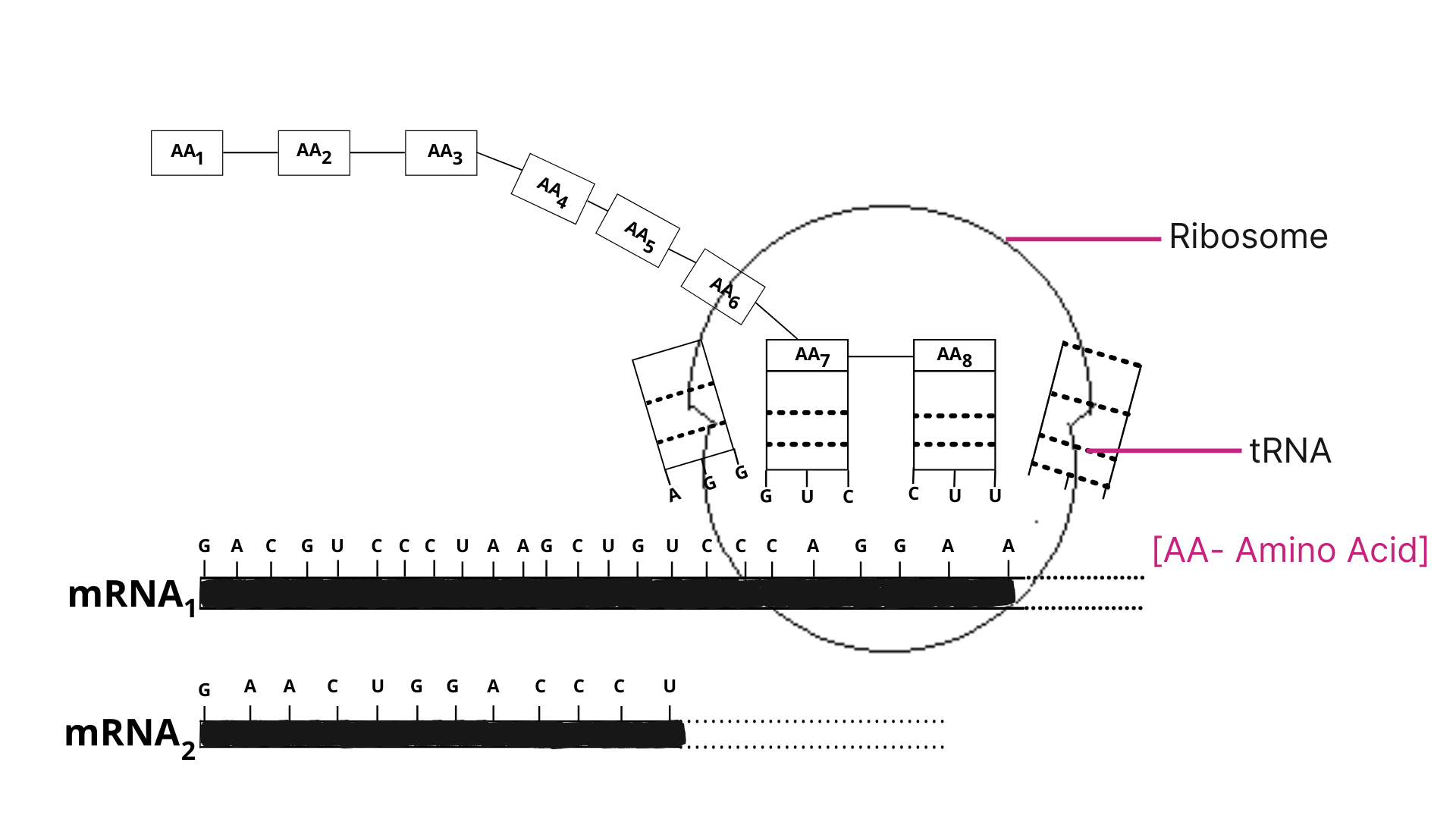Question
Question: Refer to the diagram which shows the synthesis of part of a protein molecule. Which of the followi...
Refer to the diagram which shows the synthesis of part of a protein molecule.
Which of the following is the first part of the protein molecule that would be translated from mRNA2 ?

A) AA4 – AA2– AA7 – AA6
B) AA6 – AA7 – AA2 – AA4
C) AA3 – AA1 – AA6 – AA8
D) AA8 – AA5 – AA1 – AA3
Solution
The process by which information stored in a gene is used for the synthesis of functional gene products is called gene expression. These functional products are mainly proteins and in some non-protein coding genes, functional RNA is the product. For the gene to be expressed, a gene must first be transcribed into mRNA which then gets finally translated into protein in a process called translation. Let us understand translation to find the correct answer to this question.
Complete answer:-
Step 1: let us first understand the process of translation.
So, translation is the process by which ribosomes use codons in messenger RNA (mRNA) to synthesize polypeptide which later folds into active proteins to perform specific functions in the cell. The decoding of mRNA codons is facilitated by ribosomes as they induce the binding of complementary tRNA anticodon sequences to mRNA codons. The process of translation can be divided into 3 major phases-
Initiation- Assembly of the ribosome around the target mRNA molecule. Initiator tRNA is attached at the start codon.
Elongation- lengthening of the polypeptide chain as the tRNA transfers amino acid corresponding to the next codon in the sequence accompanied by the translocation of the ribosome to the next mRNA codon to continue the process.
Termination- polypeptide chain is released from the ribosome when the stop codon is reached.
Step 2: From the above discussion, it is quite clear that the correct option is (D)- AA8 – AA5 – AA1-AA3.
Note:- In prokaryotes, transcription and translation occur simultaneously as both the processes occur in the same compartments, that is in cytoplasm. Whereas, that is not the case with eukaryotes as both the processes occur in different compartments, transcription in nucleus and translation in the cytoplasm.
Ribosome is 70S in prokaryotes, whereas it is 80S in eukaryotes.
Many antibiotics such as erythromycin, streptomycin, etc; act by inhibiting translation and since the prokaryotic and eukaryotic ribosomes differ in structure, they do no harm to host’s eukaryotic cells.
Process of translation is highly regulated in prokaryotes as well as eukaryotes.
